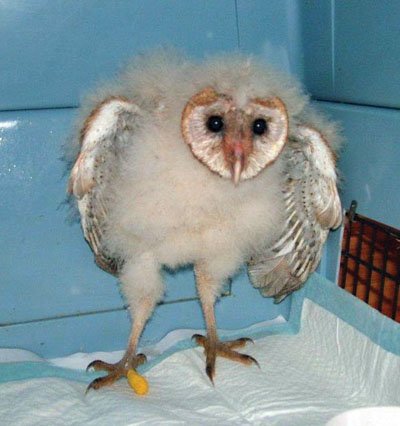”
If you love something, set it free.
”
Goodbye. Adios. Sayonara. Auf wiedersehen. As we bid adieu to
the many wild animals rehabilitated at WERC and released, we
realize that this may be the last time we see the animal. We know
we have done our job to make the animal healthy and to keep it
wild, when it snarls or hisses at us before it flies, leaps or
slithers back to its native habitat, hopefully remaining far from
human encounters.
“If you love something, set it free.” Goodbye. Adios. Sayonara. Auf wiedersehen. As we bid adieu to the many wild animals rehabilitated at WERC and released, we realize that this may be the last time we see the animal. We know we have done our job to make the animal healthy and to keep it wild, when it snarls or hisses at us before it flies, leaps or slithers back to its native habitat, hopefully remaining far from human encounters.
With urban encroachment or because of natural disasters such as droughts, fires and floods, sometimes wildlife finds itself coming back. But sometimes, when they and humans share that habitat, it can be beneficial to both. For example, hawks and owls find that the pesky and destructive rodents on farmlands are easy and abundant prey.
A former WERC column told the stories of seven orphaned barn owls and invited the public to contact the center if they were interested in a “free and natural method of rodent control” in their fields. Each application was investigated to ensure that the locations were appropriate habitats. In October, all were released to the evening skies at various Morgan Hill and Gilroy sites. One of those lucky seven was released in the rural Gilroy neighborhood of Art Pon and Debbie Cottingham, who had just built several barn owl boxes on their and their neighbor’s properties. WERC doesn’t tag or band any of the animals it releases and the birds are free to fly off wherever they desire, far, far away or not.
So what a thrill to hear from them recently that all three of their barn owl boxes are newly occupied by nesting owls. Since all seven owls were raised together for five months at WERC and most were released within a 10-mile radius of each other, there’s a possibility that they may have found each other again and moved in to new homes at the Pon-Cottingham avian housing “development.”
***
The next generation has already begun arriving at WERC. On Easter, a nestling barn owl was discovered in a bucket underneath a palm tree, having fallen from its nest up in the branches. (Non-native palm trees appear to be a popular location for this species to raise their family.) The parent had been flying down to feed it, evidenced by the dead mouse in the pail, but the baby was in peril because of the rain and heavy wind that day.
At WERC, the baby was dried off, warmed up and eagerly ate. It was discovered that the baby had injured its toe when it fell from the nest, and its talon was “hanging by a thread.” The toe was bandaged and the owlet was given antibiotics to prevent infection. Fortunately, because it’s not the “thumb” talon, even if it never grows out again the owl will be releasable when it matures. Check this newspaper’s online South Valley Pets Blog for updates on the owlet’s progress.












